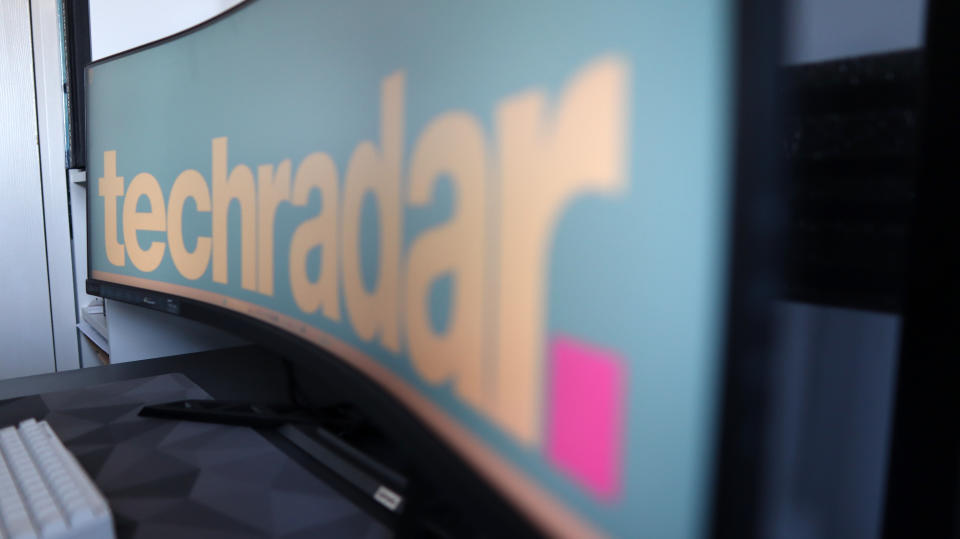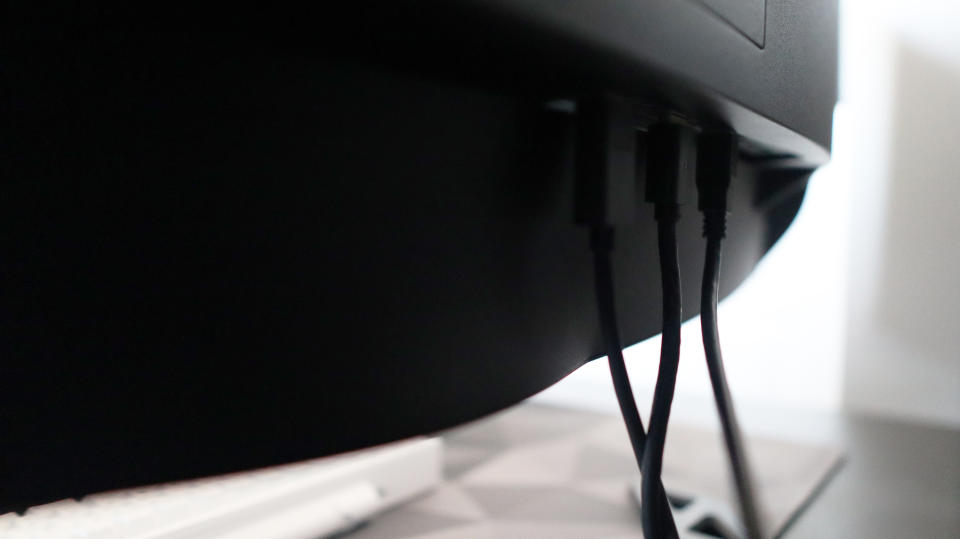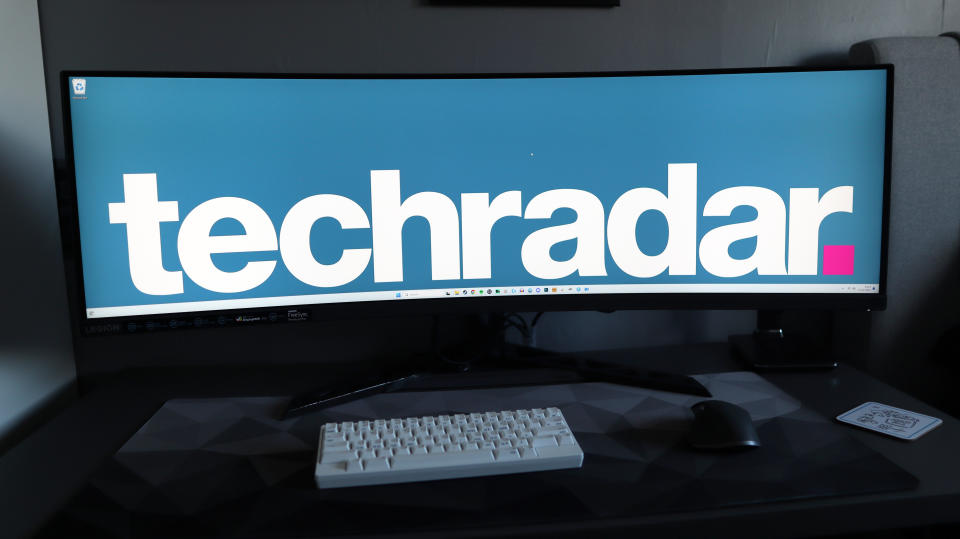Asus ROG Strix XG27ACS review: performance gaming on a budget
Asus ROG Strix XG27ACS: One-minute review
1440p on a 27-inch panel is arguably still the best choice for mainstream PC gaming. It's also cheaper than ever, with even high-refresh options dipping below $200. In that context, the new Asus ROG Strix XG27ACS doesn't immediately look like a bargain.
For sure, it's cheaper than the equivalent model from Asus's premium ROG range. But at around $300 it's still a fair bit more expensive than entry-level screens that tick the 1440p, 27-inch, and high-refresh-rate boxes.
Then again, the Asus ROG Strix XG27ACS does have a pretty strong spec list with which to do battle with the very best gaming monitors. Beyond the 1440p, 27-inch thing, you get 180Hz refresh instead of the 144Hz more common to cheaper models, plus 1ms GtG response. That later figure implies this is probably an IPS rather than VA panel, and that is indeed the case.
What's more, it comes with HDR400 support, and thus can achieve 400 nits peak brightness. HDR400 is the lowest level of HDR compliance, so you have to be realistic about what this kind of screen can achieve. But it's better than no HDR support at all.
Then add in USB-C with power delivery and a stand that adjusts every which way, not to mention the fact that this is a monitor from one of the best brands in the gaming business and you have a very attractive overall proposition. Sure, it's not the cheapest 1440p panel out there. But it's pretty reasonably priced and very promising on paper.
Asus ROG Strix XG27ACS: Price & availability

How much does it cost? $999 / £799 / around $1,540
When is it available? Available now
Where can you get it? Available in the US and UK
The Lenovo Legion R45w-30 is available in both the UK and USA for reasonable sums of money compared to other ultrawides, and was subject to a handy discount in the UK this past Black Friday to bring its price down further.
It matches reasonably well against our top ultrawide monitor choice, the LG UltraGear 38GN950, which clocks in at a third more in price than this Lenovo option at £1200 or so (although since the UltraGear model is a bit older, you may be able to find it cheaper). That panel offers a smaller screen size and aspect ratio, but makes up for it with superior brightness and contrast. It lacks some other nice-to-have features though, including extra USB ports and a KVM switch, making this Lenovo choice especially good value.
Other options from the likes of Samsung are going to cost nearly double that of the Legion R45w-30, given they are OLED, making the Legion R45w-30 a rather great value-for-money choice in its category.
Value: 4 / 5
Asus ROG Strix XG27ACS: Design

Easy setup
Plenty of connectivity options
Lackluster speakers
The Legion R45w-30 is a good-looking monitor, and carries a lot of presence when placed on my desk. It filled my 120cm desk entirely and offers a lot of display real estate for the price, that’s for sure. Its black plastic construction feels sturdy, and the flecks of metal across the base of the stand were a nice touch alongside the small Lenovo logo. The straightforward aesthetic means that it should fit well in virtually any setup, with looks to it that are far from being the most obnoxious.
On the topic of the stand, that’s especially sturdy - as it would have to be to support such a large monitor. The Legion R45w-30 is also especially easy to put together, and requires no tools to do so. This proves useful if you’re someone who has no dexterity in your hands (like me), so being able to put this Lenovo ultrawide together with very little effort was rather handy. You do have to be a bit stronger to put it on a VESA mount if you don’t want to use the included stand, though, and for that you’ll need to make sure you’ve got a stand that supports a monitor that weighs 8.3kg.
Legion R45w-30 Key Specs
Panel size: 44.5 inches
Panel type: VA WLED
Resolution: 5120 x 1440
Brightness: 500 nits
Contrast: 3000:1
HDR: HDR400
Pixel response: 1ms
Refresh rate: 170Hz
Inputs: 2x HDMI 2.1, 1x DisplayPort 1.4, 1x USB-C upstream, 1x USB-B upstream, 3x USB-A downstream, 1x Ethernet, 3.5mm headphone jack
The scope for adjustment is decent, and you can tilt and pivot the Legion R45w-30 to your liking. It can swivel left and right up to 30 degrees, as well as being height adjustable with a range of five inches, while its tilt is between 5 and 22 degrees, which is useful for making sure you’re comfortable. Admittedly, in my time using the Legion R45w-30, the massive screen did take some getting used to.
The vast array of inputs on offer pushes the Legion R45w-30 up a lot in my estimations, given it also packs in some options you don’t usually see on more affordable panels. You get a pair of HDMI 2.1 ports, a DisplayPort 1.4 as well as an Ethernet jack, a trifecta of USB-A downstream ports, a USB-C upstream and USB-B upstream, and finally a headphone jack. That gives you a lot of options for connecting additional devices, speakers, and multiple desktops or laptops.
There are built-in 3W speakers, but they aren’t the best, sounding thin and tinny overall (although they do offer a respectable max volume). You’ll definitely be thankful for the presence of that 3.5mm jack for easily connecting some external speakers to boost your audio performance.
Design: 4 / 5
Legion R45w-30: Features

Easy-to-navigate UI
KVM switch is useful
Decent range of digital settings
The OSD that the Legion R45w-30 provides is easy to navigate, especially with the mixture of buttons and a joystick to navigate through its numerous modes. Inside it, you can toggle between various HDR modes and profiles, and fiddle with more traditional settings such as brightness and contrast.
I did find myself pressing the wrong buttons inherently, but I'll admit that’s down to my own incompetence rather than the monitor's design. Having a joystick for navigating inside menus was a godsend though, and made my life a lot easier.
You even get access to a KVM switch, meaning you can have two devices connected to the Legion R45w-30 and use the same input devices. Switching over from my MacBook Pro to my desktop PC using the same peripherals (don’t worry, my keyboard has dual legend keycaps) was seamless. If you want to, you can also split sources on-screen by using either USB-C or the DP port with picture-in-picture, allowing you to work on two systems at the same time, which is a nice touch, and means you can take full advantage of the massive 44.5-inch display for multi-tasking. Features like this truly exhibit the purpose of an ultrawide panel for productivity workloads.
Features: 4 / 5
Legion R45w-30: Performance
Overall image quality is fantastic
Deep blacks and vibrant color reproduction in games
HDR performance is fairly weak
In testing the Lenovo Legion R45w-30, it provided some good detail and especially smooth output when running Counter-Strike 2, Assetto Corsa Competizione, and Forza Horizon 5, even if the latter would only run at 21:9, so it couldn’t take advantage of the full ultrawide 32:9 aspect ratio on offer.
Nonetheless, the Legion R45w-30 impressed me, with its good colors and responsive feel. Having never used an ultrawide panel for games for an extended period before, I can certainly see the appeal. ACC especially impressed me, with the entire cockpit of the GT3 Bentley Continental I was driving around Silverstone wrapped around me. Using such a wide monitor seemed to also take away the need to use the camera navigation buttons to move around, as I physically turned my head to take note of where competitors were. The Legion R45w-30 worked wonders for sim racing, not least when I moved from using an Xbox Elite 2 controller to my trusty Logitech G29 wheel.

It also proved to be much the same story when playing Dirt Rally 2, with sharp images and smooth motion thanks to the 165Hz refresh rate. On tight, twisting rally stages with lots of quick changes of direction, the sharper output was most certainly welcome. Counter-Strike 2 was a lot of fun in ultrawide form, with detailed visuals and smooth frames with that 170Hz refresh rate, even if I was terrible at killing enemies.
Out of the box, the Legion R45w-30 offered up relatively deep blacks and near-perfect whites alongside wonderfully accurate colors without needing any tinkering in the picture settings. It offered a crisp experience for both work and play, and the 5120x1440 resolution served up some excellent detail whether I was bombing my way across a New Zealand rally stage or watching some mindless content on YouTube.
The peak effective brightness of 367 nits in my testing is good enough for the price (though lower than the advertised 500 nits) and meant images did look rather vibrant. However, as much as the SDR performance here was great, the same can’t be said for HDR. Enabling HDR400 on the monitor and in Windows revealed more washed-out colors and lower color accuracy, meaning this isn’t necessarily the panel to use for those workloads. Stick to SDR though, and you’ll be golden.
Performance: 4 / 5
Should you buy the Legion R45w-30?
Buy it if...
Don't buy if...
Also Consider
Lenovo Legion R45w-30: Report Card
First reviewed March 2024

